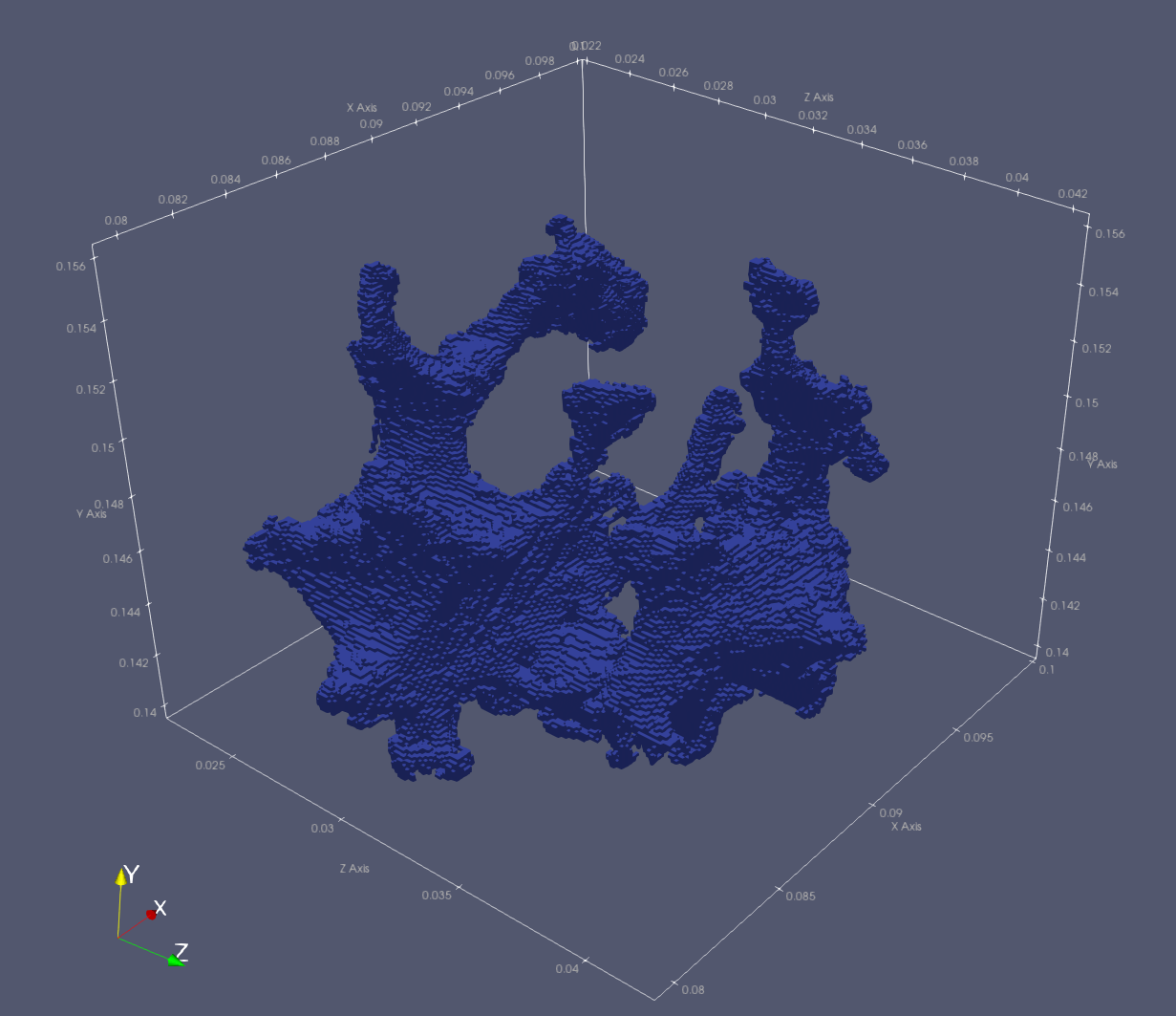Compute circumscribed sphere
stopk...@gmail.com

Michael Jackson
I was going to suggest the “Compute Feature Corners” filter. Once you have the corners in theory you could probably use the Calculator filter to compute the Radius of the circumscribed sphere. Possibly?
--
Mike Jackson
On 4/4/22, 7:00 PM, "stopk...@gmail.com" <dream3...@googlegroups.com on behalf of stopk...@gmail.com> wrote:
Hi Mike,
I am analyzing porosity defects from CT data of additively manufactured builds using DREAM.3D. The lack of fusion (LOF) type defects often exhibit complex morphology as shown here:

I'd like to analyze the shape and volume of these types of features. Equivalent diameter can obviously be deceiving in this case and result in a much smaller size than the actual defect size. I also investigated the “AxisLengths_0” measurements calculated using the “Find Feature Shapes” filter but from my understanding, I don't think the "best fit ellipsoid" would work well here.
I think the circumscribed sphere diameter (otherwise known as feret or caliper diameter) would be ideal in this case. Is there a way to compute this in DREAM.3D? I think I can compute this outside of DREAM.3D using the minimum and maximum x, y, and z coordinates from the “Compute Feature Corners” filter, but wanted to get your insight first. Thanks in advance!
Best regards,
Kris
--
You received this message because you are subscribed to the Google Groups "dream3d-users" group.
To unsubscribe from this group and stop receiving emails from it, send an email to dream3d-user...@googlegroups.com.
To view this discussion on the web visit https://groups.google.com/d/msgid/dream3d-users/7f8245f1-a347-4cea-81a0-264da8326561n%40googlegroups.com.
stopk...@gmail.com
- Python "meshio" module (https://github.com/nschloe/meshio). I use this to read in the .vtk file to get the grain ID at every voxel (remnants from a different project...) but all that is needed is a list of each voxel's center of mass and the grain ID at each voxels. So users can use whatever method they prefer to read in this information.
- .vtk file of the microstructure. The "Vtk Rectilinear Grid Exporter" filter can be used to export this file and there should be no issues using the meshio module described above.
- .csv file of each feature in the microstructure. I use this to 1) read in the number of features in the microstructure, and 2) filter features above (in my case the very large "feature" that is actually the dense material), and below (too small based on CT scan resolution) some threshold, which in this case is number of voxels that belong to a feature.
